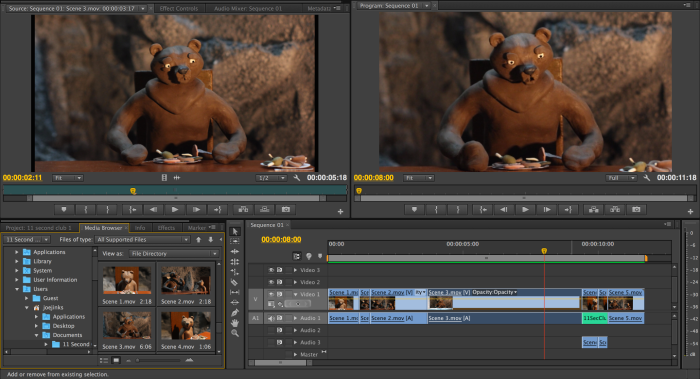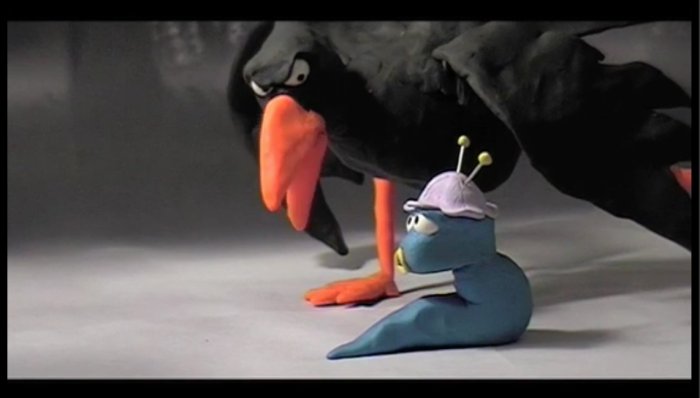After coming to character designs that I was happy with I had to build them. There ended up being some inconsistencies between the designs and the finished puppet but I’m not surprised by this. As the character was translated from 2D to 3D, certain aspects needed to be adapted – I consider the sculpting of the puppet to be the final pass of the design and I am pretty happy with the results.
Unfortunately I wasn’t able to translate the texture of the bogorodskoye toys as it left undesirable tool marks but the overall design was certainly inspired by them.

For the set I had planned to create a very simple background, most likely a 2-dimensional painting of a simple kitchen scene. As I was building my puppets and setting up the scene, however, I was working in front of a set that I had built for a previous project andthe more I worked in front of it, the more I liked it. I believe that, as the set is a cave (the natural dwelling of a brown bear) it’s an appropriate choice and adds to the narrative.

To help build the props I would need and to work out the scale of the animation, I created extremely crude stand-ins for the puppets. The images below show how I used the puppets to determine the size of the table and chairs, as well as the size difference between the two characters. It also helped me work out how I would frame my animation when it came to shooting it. Also below are the other props I had to make for the animation; the plates piled high with meat.
The puppets were sculpted out of plasticine with a wooden and wire armature for support… as usual I forgot to take process photographs but there is some evidence of the armature in these images of the incomplete puppet.
After all that, here is what I had, ready to set up for shooting. The image is just a representation of the bare bones of the animation which I would next flesh out by taking into account lighting, composition and cinematography. I used extra plasticine around the base of the table and chairs to help secure them, minimising unwanted movement in the animation stage.

























